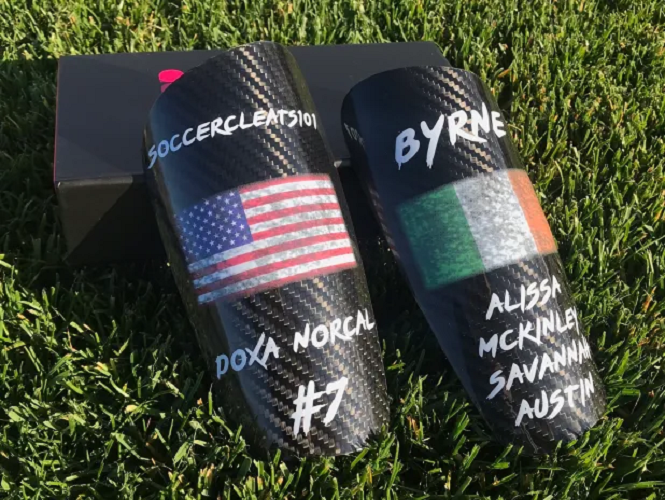
Custom shin guards are becoming increasingly popular among athletes who want a perfect fit and maximum protection. However, before you can order your custom shin guards, you need to know how to measure your legs properly to ensure that your shin guards fit perfectly. In this article, we will discuss the steps you need to take to measure for custom shin guards.
Step 1: Gather the necessary tools
Before you start measuring, you will need a few tools. These tools include:
A measuring tape
A pen or marker
A ruler or straight edge
Make sure that you have all these tools with you before you start measuring.
Step 2: Measure your leg length
The first step in measuring for custom shin guards is to determine the length of your leg. To do this, sit down on a chair and place your foot flat on the ground. Measure the distance from the bottom of your foot to the bottom of your knee cap using a measuring tape. Write down this measurement on a piece of paper.
Step 3: Measure your calf circumference
The next step is to measure the circumference of your calf. To do this, use the measuring tape to measure the widest part of your calf muscle. Make sure that the measuring tape is snug but not too tight. Write down this measurement on a piece of paper.
Step 4: Measure your ankle circumference
The final step is to measure the circumference of your ankle. To do this, use the measuring tape to measure the narrowest part of your ankle. Make sure that the measuring tape is snug but not too tight. Write down this measurement on a piece of paper.
Step 5: Determine the size of your shin guards
Now that you have your leg length, calf circumference, and ankle circumference measurements, you can determine the size of your custom shin guards. Most custom shin guard manufacturers provide a size chart that you can use to determine the size you need based on your measurements.
To use the size chart, find the row that corresponds to your leg length and the column that corresponds to your calf circumference. The intersection of these two measurements will give you the size of your shin guards. For example, if your leg length is 16 inches and your calf circumference is 14 inches, you may need a size medium shin guard.
Step 6: Try on your shin guards
Once you have determined the size of your shin guards, it is time to try them on. Make sure that you wear the socks you will be wearing during your game when trying on your shin guards. This will help you get a more accurate fit.
When trying on your shin guards, make sure that they fit snugly and do not move around. The shin guards should cover the entire length of your shin, from just above your ankle to just below your knee. If the shin guards are too loose, they will not provide adequate protection. If they are too tight, they may be uncomfortable or restrict your movement.
Step 7: Make adjustments
If your shin guards do not fit perfectly, you may need to make some adjustments. The first adjustment you can make is to adjust the straps that hold the shin guards in place. These straps should be snug but not too tight. If they are too loose, the shin guards may move around. If they are too tight, they may restrict your movement.
Another adjustment you can make is to add padding or remove padding from your shin guards. Some custom shin guards come with adjustable padding that allows you to customize the level of protection you need. If your shin guards are too bulky, you may need to remove some of the padding. If they do not provide enough protection, you may need to add more padding.
Conclusion
Measuring for custom shin guards is an important step in ensuring that you get the perfect fit and maximum protection. By following these steps, you can measure your legs accurately and determine the size of your shin guards. Remember to try on your shin guards and make any necessary adjustments before using them in a game. With properly fitting custom shin guards, you can focus on your game without being distracted by uncomfortable or restrictive gear.

